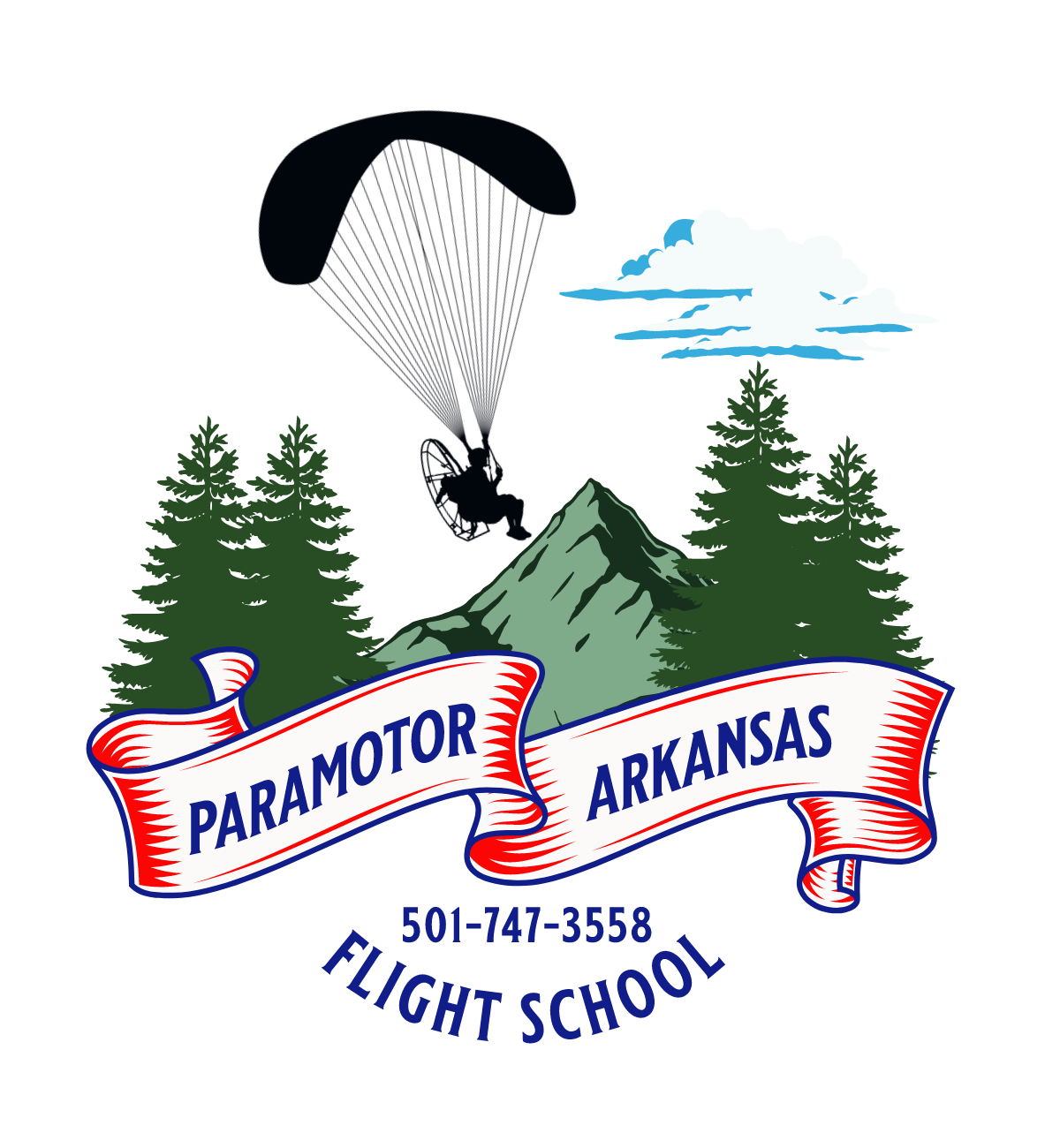Paramotor Terminology IV
-
Uncontrolled Airspace: Airspace where air traffic control services are not provided. Pilots operate under Visual Flight Rules (VFR) and are responsible for their own separation.
-
Restricted Airspace: Designated airspace with limitations on aircraft operations due to potential hazards, security concerns, or other restrictions. Access may require specific permissions.
-
Aerodrome: Another term for an airport or airfield, including its runways, taxiways, and facilities.
-
Wind Tee: A simple wind indicator on the ground, typically shaped like a tee, used to show the direction and approximate speed of the surface wind.
-
Ground Reference Points: Fixed visual references on the ground used by pilots for navigation and maintaining orientation during flight.
-
Ground Effect: The increased lift and reduced drag experienced when an aircraft is flying close to the ground.
-
Flight Planning: The process of preparing for a flight, including route selection, weather analysis, fuel calculation, and other considerations.
-
Navigational Aids: Tools and devices used for navigation, such as GPS, radio beacons, and visual landmarks.
-
Global Positioning System (GPS): A satellite-based navigation system that provides real-time position information.
-
Obstacle Clearance: Ensuring a safe vertical distance between the aircraft and obstacles or terrain during flight.
-
** Minimum Safe Altitude Warning (MSAW): A system that alerts pilots if their aircraft is flying below a predetermined minimum safe altitude.
-
Emergency Locator Transmitter (ELT): A device that, when activated, transmits a distress signal to aid search and rescue operations in case of an emergency.
-
Survival Kit: Equipment carried by pilots to enhance their chances of survival in the event of an emergency landing.
-
Emergency Procedures: Protocols and actions to be taken by pilots in response to critical situations or equipment failures.
-
Mayday Call: A standardized distress call used by pilots to signal an emergency.
-
Search and Rescue (SAR): Operations conducted to locate and assist aircraft or individuals in distress.
-
Visual Signals: Hand signals or visual cues used by pilots and ground personnel for communication, especially during emergencies.
-
Emergency Landing: Deliberate landing in a non-designated area due to an in-flight emergency.
-
Emergency Shutdown: Quickly turning off the aircraft's engine in response to an emergency or unsafe condition.
-
* Oil Injection System: A system that automatically injects oil into the engine to lubricate moving parts.
-
Exhaust System: The system responsible for expelling combustion gases from the engine.
-
Silencer/Muffler: A device used to reduce the noise produced by the exhaust system.
-
Warm-Up Procedure: The process of allowing the engine to reach optimal operating temperature before takeoff.
-
Cooling System: Components that regulate the temperature of the engine during operation.
-
Engine Overhaul: The extensive maintenance process that involves disassembling, inspecting, and reassembling the engine.
-
Spark Plug: A component that ignites the fuel-air mixture in the engine's combustion chamber.
-
Four-Stroke Engine: An engine that completes four strokes (intake, compression, power, exhaust) in each cycle.
-
Two-Stroke Engine: An engine that completes two strokes (compression, power) in each cycle.
-
Fuel Tank: Container for storing the fuel needed for the engine.
-
*** Fuel Gauge: Instrument indicating the amount of fuel remaining in the tank.
-
Fuel Filters: Devices that remove impurities from the fuel before it reaches the engine.
-
Preflight Fuel Check: A procedure to ensure an adequate and correct amount of fuel before each flight.
-
Electric Start: A system allowing the pilot to start the engine with an electric motor.
-
Manual Start: Starting the engine manually, often by pulling a starter cord.
-
Carburetor Heat: A control to prevent carburetor icing by supplying warm air to the carburetor.
-
Propeller Guard: A protective device around the propeller to prevent contact with objects.
-
Transceiver: A device capable of both transmitting and receiving, commonly used in communication equipment.
-
Helmet: Protective headgear worn by pilots for safety.
-
Gloves: Hand protection worn by pilots to maintain grip and protect against the elements.
-
Flight Suit: Specialized clothing worn by pilots for comfort and safety during flight.
-
Goggles: Eye protection worn by pilots to shield against wind, debris, and glare.
-
Emergency Whistle: An audible signaling device carried for emergency communication.
-
First Aid Kit: A set of medical supplies carried for immediate medical assistance.
-
Hydration System: A device for carrying and drinking fluids during flight.
-
Flight Log: A record of flight details, including time, distance, and important events.
-
Weather Briefing: Gathering and analyzing weather information before a flight.
-
Aeronautical Chart: A map specifically designed for aviation, providing essential information for navigation.
-
Notice to Airmen (NOTAM): Official notices containing critical information for pilots, such as changes to airspace or airport conditions.
-
Wind Rose: A diagram showing the frequency and direction of wind at a specific location.
-
Weight-Shift Control Aircraft: Aircraft controlled by shifting the pilot's weight, such as paramotors and trikes.
* Injects 2 stroke oil into a motor. Both gas and oil is separated until the machine is running. Not used very often.
** not used under FAR 103
*** Digital usually stuck on the outside of the gas tank. Some apps give an average or virtual gas gauge. Not very reliable.
